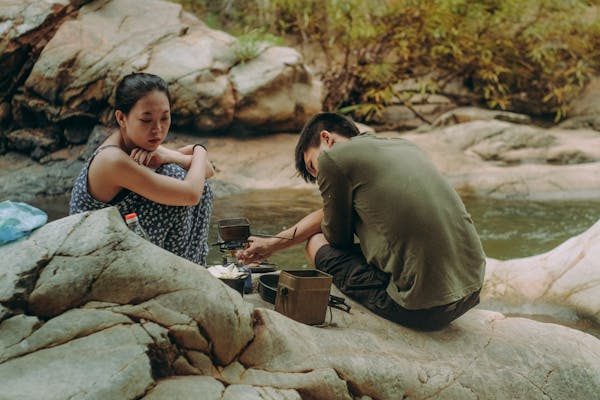Learn to make the most of the wilderness around you. This course teaches you how to use and understand your equipment, along with utilising woodland supplies for everything from food to shelters.
This is a great course for beginners, or those looking to develop their skills further. It is aimed at instructors working in outdoor centres, schools or in non-formal settings.
Basic skills
Bushcraft, often used interchangeably with wilderness skills, is the ability to use natural resources to meet your survival needs. This can include building shelters, foraging food, purifying water and even hunting game. These skills are critical when SHTF because, in a large-scale disaster, modern conveniences like electricity, clean water and functioning sewage systems will likely go down.
One of the first things you need to learn is how to identify trees and plants so that you know what to use for tinder, cordage or food. For this, a good quality field guide is a must. Discover more at advanced bushcraft course.
Another crucial skill to learn is how to tie simple knots, such as the square knot, figure eight and bowline knot, which can help you secure cordage, create footholds or pull someone to safety.
Shelters
A shelter is a critical survival skill as it allows you to sleep comfortably and retain your body heat. It also protects you from the elements such as rain, wind or snow.
You can build a shelter using a variety of materials. The best shelters are made from a combination of materials and use the natural shape of the area to guide construction.

It is important to remember that your shelter should be built 12-18″ off the ground. This will prevent the cold earth sucking every ounce of heat from your body and keeping you awake. It is also good to build your shelter near a rock outcropping or cave as this will reduce wind exposure. It is also a good idea to build your shelter facing the sun.
Food
Whether it is preparing food over an open fire or foraging for wild edibles, proper food preparation is essential to survival. This can be an intimidating skill for new bushcrafters to learn, as mistakes can lead to severe health consequences in the wilderness.
Taking a survival course with a professional bushcraft instructor helps to give confidence to students in their ability to properly prepare food in the wilderness. A good teacher will instruct in the proper identification of wild plants, as well as techniques such as boiling, frying, and steaming. They will also teach how to prepare game, including skinning animals and preparing meat for consumption. A good bushcraft course will also cover techniques for cooking for several people at camp, a necessary skill when camping outdoors.
Water
Water is vitally important for the survival of humans in the wild. Dehydration impacts on strength and power and can lead to heat stroke and death. It is therefore a very important skill to learn to find and sustain water in the wilderness.
Learn to use natural filtration systems to clean water, or to boil it. Boiling and using iodine are traditional methods of making water safe to drink in the wilderness, but it is also possible to make an inexpensive bushcraft filter from materials available in nature.
This course is dedicated to providing air crew with the theoretical and practical skills required to survive in a water emergency. It includes survival priorities, tracking mammals and finding water in the wild. It is a week long immersion into the go anywhere fundamentals of wilderness survival.
Tools
At the heart of any bushcraft skill set is a range of cutting tools. Knives, axes and adzes can turn what might seem impossible into the possible. We’ll teach you how to use them and how to make more.
Fire-lighting is one of the most important outdoor skills to have. It’s essential for shelter building and cooking, and it also provides warmth and a means to purify water. We’ll help you to master the basics of tinder and kindling as well as teaching you how to construct feather sticks.
We’ll also show you how to properly look after your tools – from sharpening axes and knives to making natural glues and hafting techniques for making primitive tools. We’ll even help you to produce some simple hunting traps (no animals will be harmed).